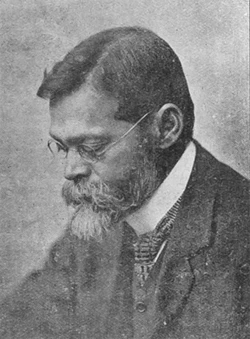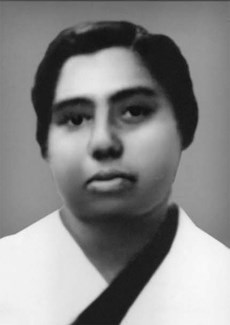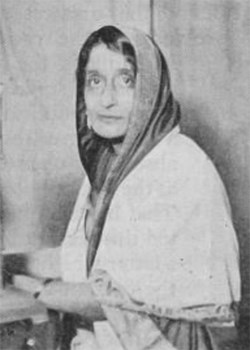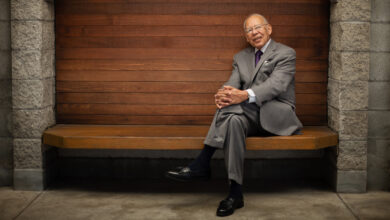Five Indian Christians Who Fought for India’s Freedom

This year, India celebrates the 75th anniversary of Republic Day, a holiday commemorating the nation’s constitution coming into effect in 1950. While the efforts of towering figures like reformers Mahatma Gandhi and Jawaharlal Nehru are widely celebrated, the courageous participation of Indian Christians in the freedom struggle often goes unrecognized.
Following Jesus’ example, many lived simply, humbly, and selflessly to uplift the poor and marginalized of India, and their faith in God nurtured their hopes for Swaraj, or self-rule. From sheltering dissidents to mobilizing women, educating youth to building institutions, these Christian stalwarts contributed in diverse ways. Their work dispels the myth that the Indian independence struggle was solely a Hindu-Muslim endeavor.
Below are five Christian leaders who dedicated themselves to the cause of Indian nationalism and of overcoming British colonial rule. From Kerala in the south to the Punjab in the north, these men and women of faith were driven by a deep patriotism and a desire to see their motherland free.
1. Sushil Kumar Rudra (1861–1925)
When Kasturba “Ba” Gandhi, otherwise known as the wife of Mohandas “Mahatma” Gandhi, returned to India from South Africa in 1915, she and her children were welcomed by Sushil Kumar Rudra, a second-generation Bengali Christian and the first Indian principal of the prestigious St. Stephen’s College in Delhi.
Rudra had traveled to Bombay (now known as Mumbai) specifically to receive the Gandhi family, and he hosted them in Delhi while they awaited Mahatma Gandhi’s arrival from London. He had also been the man largely responsible for convincing Gandhi to return to India.
As principal, Rudra encouraged nationalism among the students. He had long supported the Indian independence movement, even before he risked his relationship with the British by sheltering the Gandhi family in his Delhi home in 1915. Gandhi referred to Rudra as a “silent servant” for his quiet acts of resistance, which included helping Lala Har Dayal, Rudra’s former student and the leader of the Ghadar movement, leave the country in 1911 to avoid being arrested by the British. When Gandhi himself returned to India from South Africa, he stayed in Rudra’s house, where he wrote important letters and documents related to civil disobedience and Hindu-Muslim relations.
Image: Wikimedia Commons
Sushil Kumar Rudra
Rudra was born to parents who had converted to Christianity under the influence of Scottish missionary Alexander Duff. Rudra graduated from Calcutta University and left for the Punjab, where he joined the staff of St. Stephen’s College in 1886. He married Priyobala Singh in 1889, who tragically passed away due to typhoid in 1897. The couple had three sons, and the youngest, Ajit Anil Rudra, rose to prominence, becoming one of the first Indian major generals in the Indian Army.
After several years as a teacher, Rudra was appointed principal, becoming the first Indian to head a missionary institution during the colonial era. Under his leadership, the college grew in size and reputation, shifting toward a more residential model. Rudra helped draft a new constitution for the college that increased Indian control by reducing the influence of the British founders. He also instituted equal pay regardless of race. As documented by Daniel O’Connor in Gospel, Raj and Swaraj, Rudra observed the Englishmen’s inclination to impose their views and convert others, a stance he resisted.
Rudra is considered to be one of the first to promote the idea of a Christian ashram, mentioning the idea in an article in 1910. (Up to that point, ashrams were Hindu communities where students educated themselves under the tutelage of a guru. In the 1930s, American missionary E. Stanley Jones began a Christian ashram, though it is unclear whether his idea was inspired by Rudra.) He was close to Sadhu Sundar Singh, better known as “the apostle with the bleeding feet,” having met Singh long before he met Gandhi or Tagore.
Charles Freer Andrews, a missionary, educator, and very close confidant and collaborator of Rudra, credited his friend’s prayer life with teaching him to love God with all his heart, mind, and soul:
I learnt from my friend to understand what Christ is to the heart of men in new and living ways. I found that the new thoughts and visions of Christ were not strange or unfamiliar to India, but intimately one with India’s own higher spiritual life. This transformation of my Christian faith into a more living reality I regard as the greatest gift which Sushil Rudra’s friendship brought into my own character and nature.
Upon concluding his tenure at St. Stephen’s College, Rudra established his residence in the Himalayan foothills, where he died in 1925 at the age of 64. Gandhi, in an obituary featured in his English publication Young India, characterized Rudra as a quiet but deeply interested spectator in the events of the national struggle.
2. Accamma Cherian (1909–1982)
Accamma Cherian was a pioneering advocate for women’s rights and a courageous freedom fighter from the Christian community in Kerala, then known as Travancore, who overcame immense odds to play an important role in India’s independence struggle.
Cherian was born in 1909 into a prosperous Syrian Catholic farming family. Despite living in a traditional society, her forward-thinking parents supported their daughters’ education. Cherian took full advantage of these opportunities and graduated with her teaching credentials by age 24 and soon became the headmistress of a reputable school in the town of Edakkara.
However, by the 1930s, Cherian had renounced her prestigious teaching career to actively join India’s independence movement. The Indian National Congress (or Congress Party), the political party under Mahatma Gandhi’s leadership, recognized Cherian’s bravery and organizational skills, entrusting her with establishing the Desasevika Sangh, or Female Volunteer Corps, across India. Cherian ultimately recruited and trained thousands of women volunteers, giving them a voice and a means to participate in the male-dominated freedom struggle.
In 1938, Cherian’s courage was tested when she was thrust into leadership in the Travancore State Congress Party (TSC) after the authorities ruthlessly suppressed protests and imprisoned party leaders there. Before his own arrest, the TSC president nominated Cherian to lead in his place.
“I was aware of the seriousness of the assignment and knew what the consequences could be, yet I volunteered to do the job,” she later wrote in her autobiography.

Image: Wikimedia Commons
Accamma Cherian
Defying a ban, Cherian fearlessly organized a rally of 20,000 people demanding the government revoke its ban on the TSC, free political prisoners, and expel the region’s corrupt leader. Facing armed British police ordered to shoot protesters, she dared them to shoot her first. Her bold stand forced the police to withdraw without firing on the crowd.
For her valor in the face of grave danger, Cherian was arrested multiple times. But her courage earned praise from Mahatma Gandhi, who hailed her as the “Jhansi Rani of Travancore,” comparing her to the brave Queen Lakshmibai who rebelled against British rule in 1857. Inspired by their sister’s example, Cherian’s siblings Rosamma and K. C. Varkey also joined the independence struggle.
After India gained independence, Cherian was elected to the Travancore legislative assembly in 1948, becoming one of the first women to hold political office in the state. However, she soon faced challenges from the male-dominated Congress Party. Disillusioned, she resigned from the party in 1952 and accused it of being taken over by opportunists.
In November 1952, at age 43, Cherian married V. V. Varkey Mannamplackal, a seasoned Congress activist from her hometown. After leaving the assembly, she attempted to restart her political career by contesting the 1953 elections as an independent candidate while pregnant. Facing attacks on her character as well as significant opposition due to jealousy and her sister’s Communist affiliation, she lost the election.
After this defeat, Cherian retreated from politics for over a decade to focus on managing the family’s rubber plantation and raising her son. She made one final attempt to revive her political career in 1967 but met defeat again, ending her aspirations.
“Shakespeare has said that the world is a stage and that all the men and women are merely players; but to me, this life is a long protest,” she later wrote in her autobiography. “Protest against conservatism, meaningless rituals, societal injustice, gender discrimination against anything that is dishonest, unjust. When I see anything like this, I turn blind, I even forget who I am fighting.”
In the 1970s, Cherian and her family relocated to Trivandrum so she could oversee her son’s engineering education. She lived out her final years quietly there until her passing in 1982 at age 73.
3. Harendra Coomar Mookerjee (1877–1956)
Harendra Coomar Mookerjee was an Indian academic and public figure who contributed to India’s independence movement and the founding of the free country. He was vice president of the Constituent Assembly of India.
Mookerjee was born into a Brahmin Bengali Christian family in Calcutta in 1877. The family had converted to Christianity after his grandfather, Bhairabchandra Mookerjee, embraced the faith after receiving kind treatment from Serampore missionaries following an accident. He was possibly their first Brahmin convert, and his decision cost him his ancestral property. His death at a young age orphaned his son (and Mookerjee’s father), Lalchand Mookerjee, and left him reliant on the missionaries for his education. Nevertheless, he excelled in studies and ultimately became self-sufficient.
Mookerjee also found academic success and became the first Indian to receive a doctor of philosophy degree from the University of Calcutta. Mookerjee’s doctorate was in English literature, and he went on to work in academia and public service. As he continued to progress in his career, he was forced to work through the loss of his son, who died from typhoid fever at age 17, and several months later, the death of his wife, Chipmoyee Goswami.
In 1937, Mookerjee ran for a seat in the Bengali legislative assembly as a representative of the Christian community. He also served as president of the All India Conference of Indian Christians, an association for Christians connected with the freedom struggle, and was an active member of the Indian National Congress.
Mookerjee played a key role in drafting India’s constitution. The Constituent Assembly, which drafted and adopted the constitution of India, unanimously nominated him and another politician from Jaipur to serve as vice presidents of the body.
A devoted patriot, Mookerjee also deeply cherished his Christian faith, expressing profound reverence for “my Master” and “my Lord.” As evidenced in his speeches, his love for Christ enabled him to transcend communal divides and see everyone as brothers. Firm in his beliefs, he made the case that Indian Christians should be allowed to evangelize.
“We believe that the faith we follow has a deep significance in religious life, bringing about a positive change in a person’s character more effectively than other prevailing religions,” said Mookerjee in one speech. “This belief is our only justification for sharing our perspective with our non-Christian brethren. As Christians, we assert the same right to share our faith, a right enjoyed by Muslims, Sikhs, Arya Samaj, and advocates of the Sangathan and Shuddhi movements.”
Throughout his life, Mookerjee wrote extensively on Indian politics and society, and in a speech, he detailed how he had transitioned from being a “Christian communalist” to a “Christian Indian nationalist.”
After the constitution was approved, the president appointed Mookerjee as governor of West Bengal in 1951, a position he served in until his death from a heart attack in 1956.
4. Titusji (1905–1980)
India’s old 500-rupee note depicts a sculpture in Delhi that portrays Mahatma Gandhi leading ten followers at the Salt March, a historic civil disobedience protest. One of those ten is Titusji, the only Christian among the 78 people who accompanied Gandhi during the iconic 1930 event.
Freedom fighter and social reformer Titus Theverthundiyil was born in 1905 to a Mar Thoma Syrian Christian family in Maramon, Kerala. Gandhi later dubbed him Titusji as a term of affection and respect. Raised on a farm, Titusji attended school and later became a teacher before studying dairy management. His son Thomas later noted that his father had become an “expert at pasteurising and chilling milk and at making curds, buttermilk, butter, ghee and different varieties of cheese (then consumed by the Westerners only).”
In 1929, Titusji began applying his dairy expertise at Gandhi’s ashram in Sabarmati, where his expenses were provided for but he received no salary. (Gandhi did send five rupees monthly to Titusji’s family to support his aged father.) As a community member, Titusji was asked to observe celibacy, clean the latrines, and wash his clothes in the river.
In 1930, as the statue later depicted, Titusji joined Gandhi in a 24-day, 239-mile march from the ashram to the coastal town of Dandi, protesting British salt taxes. Marchers of all faith backgrounds walked 10 miles daily while spinning handwoven clothes and praying. At the Salt March’s end, Titusji was beaten, arrested, and jailed. After his release from prison, he went back to the ashram.
In 1933, Titusji married Annamma, who was also from Kerala. Gandhi allowed the new couple to live in Titusji’s room temporarily, but life in the community was hard for Annamma, who, against her will, was forced to relinquish her gold jewelry and clean the latrines at the request of Gandhi and her husband. The couple ultimately had seven children, and when Gandhi dissolved the ashram, the family traveled around the country working on dairy farms. To make ends meet, Titusji ultimately sold their family car and property in Kerala.
In 1970, Titusji published The Bharat of My Dreams, expressing his hopeful vision for a nation where everyone was considered equal. He passed away at the age of 75 in 1980. Unlike his fellow freedom fighters, he never received any medals or pension.
Titusji is remembered as a devout Christian who believed in the dignity of every individual. In Bhopal, he played a key role in establishing a Christian church and its missions ministry.
5. Amrit Kaur (1887–1964)
Rajkumari Dame Bibiji Amrit Kaur was an Indian freedom fighter and independent India’s first health minister. Born into Punjabi royalty, she was the youngest of ten children. Her father Raja Harnam Singh was a Christian convert and prince of Kapurthala (Punjab) who married a Bengali missionary’s daughter. Raised Protestant Christian, Kaur entered India’s independence movement after the 1919 Jallianwala Bagh massacre, joining Mahatma Gandhi’s Congress Party.
Kaur’s father, Singh, is remembered as a dedicated Christian who had many learned and patriotic Indian friends who exposed his children to nationalist ideas through their conversations at the family’s house. Among these friends was Gopal Krishna Gokhale, a social reformer whom Gandhi considered his political guru. “The flames of my passionate desire to see India free from foreign domination were fanned by [Gokhale],” Kaur later wrote.
An advocate of women’s rights, Kaur campaigned against temple slavery, child marriage, and cultural norms that forced women out of public spaces. In 1927, she founded the All India Women’s Conference and was jailed for joining Gandhi’s Salt March (via Bombay).
In 1934, she moved to Gandhi’s ashram, adopting its simple lifestyle. Along with economist J. C. Kumarappa, Kaur became one of Gandhi’s few Christian confidants, functioning as his secretary for nearly 17 years.

Image: Wikimedia Commons
Rajkumari Amrit Kaur
In 1937, Kaur was jailed again, this time on charges of sedition, during a goodwill mission in present-day Pakistan, and then again for 20 months in 1942 for the Quit India Movement, for which she organized several demonstrations and marches against British rule. The toll on her health was evident after she endured a brutal baton charge. Eventually, she was released from jail and put under house arrest in a city in the foothills of the Himalayas.
As independence neared, she championed universal suffrage and chaired the All India Women’s Education Fund Association. TIME magazine declared her 1947’s “Woman of the Year.”
Post-independence, Kaur was elected to parliament and served as the minister of health for ten years. She spearheaded public health campaigns against malaria and tuberculosis, and founded the All India Institute of Medical Sciences.
In 1950, she became the first female and Asian president of the World Health Assembly and tirelessly advanced women’s rights, child welfare, and public health. She was a founder and chair of many significant social organizations that persist to this day and she played key roles in international health organizations. She also founded Lady Irwin College in Delhi.
Kaur was also a personal friend of American evangelist Billy Graham. She presided over his crusade in Delhi in 1956, later saying of him: “Billy Graham is one of those rare jewels who tread this earth periodically and draw, by their lives and teaching, millions of others closer to God.”
Kaur is remembered as someone who followed the doctrine of equal respect for all religions. In Gandhi’s ashram, she was a regular participant in prayers featuring scriptures from all religions.
Throughout her life, Amrit Kaur consistently fought for India’s independence and its people’s welfare, laying aside her privileged roots to exemplify selfless service. As she was described when receiving an honorary doctorate from Princeton University in 1956:
A Princess in her nation’s service. She has gone among the poor and the weak, the mothers and the children, the sick and the starving, not only with messages of hope and faith but also with substantial and highly effective programmes of action. … She stands thus as a living image of faith, hope and love— believing like St. Paul that the greatest of these is love.




